A detailed itinerary tailor-made for you.
Start planning your tailor made vacation with Far & Wild.

Alistair
Travel Expert
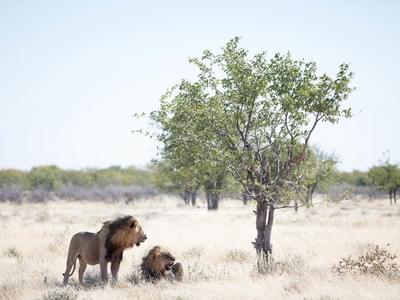
From the mighty lion to the speeding cheetah, wild cats are some of the most fascinating animals on our planet and the draw to see them in their natural habitats remains stronger than ever. But did you know that whilst there are 36 different species of wild cat, historically only four cats were officially classed as Big Cats? These are tiger, lion, leopard and jaguar. The criteria were that they belong to the genus Panthera and have a special two-piece hyoid bone in their throat which allows them to roar.
Surprised not to see cheetah included? Cheetahs are the only living species that belong to the genus Acinonyx and purr rather than roar so whilst they are unquestionably large cats, they were not historically counted as a ‘Big Cat’, although many people include them today, and have added them as number five to our list.
So without further ado, here are our top places to find leopards, lions, tigers, jaguars and cheetahs in the wild.
Let’s start with the most elusive of big cats, the nocturnal and notoriously shy leopard. These sleek cats are known for their distinctive dark spots, officially called rosettes and their ability to climb trees.
Leopards are mainly solitary animals spending most of their time alone and using scratches on trees and their urine to mark their own territory and warn other leopards to keep away. They are strong climbers, often found in the branches of trees which gives them a good vantage point to spot prey, and can also provide a peaceful spot for them to enjoy a meal away from other predators.
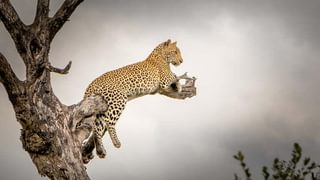
a) South Luangwa, Zambia
South Luangwa National Park. It is a toss-up between here and the Kruger as to which has the highest density of leopards in Africa. Zambia claims Luangwa, and South Africa claims Kruger, safe to say, both have plenty!
South Luangwa is not called the Valley of the Leopards for nothing and sighting here is almost guaranteed due to the high volume of leopards and the fact that they are remarkably unbothered by the humans here. The open plains are punctuated with plenty of trees from large sausage trees to acacias making the habitat here ideal for leopards who use the vantage point to scour for prey (as well as to hide it from other predators).
Trip idea: Classic Zambia safari which includes South Luangwa, Zambezi River and Victoria Falls.
b) Sabi Sands, South Africa
The private game reserve, Sabi Sands which forms part of the Greater Kruger in South Africa is another wonderful spot to see leopards.
One thing that stands out about leopard sightings in Sabi Sands is that they tend to be very relaxed around vehicles which means you can be lucky to see them in more open surroundings.
Trip idea: Luxury Kruger and Mozambique which combines a Sabi Sands safari with the pristine beaches of Benguerra Island.
c) Laikipia, Kenya
Laikipia in Northern Kenya has recently been getting a lot of press due to a mythical black leopard and so deserves a special mention here. First photographed in 2019 at Laikipia Wilderness Camp, the black leopard has since been spotted many times in Laikipia.
Why is it black? A black leopard is due to melanistic (the opposite of an albino), where there is a surplus of pigment which means where it would usually be golden, instead, its coat looks black. It is very rare and has been shrouded in mystery, which of course means everyone is keen to spot it!
Trip idea: Family safari and beach combining Laikipia with the Masai Mara, followed by a few days on Diani Beach.
d) Yala National Park, Sri Lanka
The most famous of Sri Lanka’s national parks and with good reason, Yala National Park has the highest density of leopards in the world and there are estimated to be 40 plus leopards roaming this park. The high numbers of leopards and the fact that much of the park is open make spotting one of these elusive cats likely, but by no means guaranteed!
Where to stay: Wild coast tented lodge
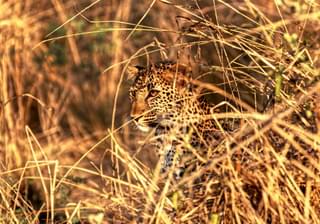
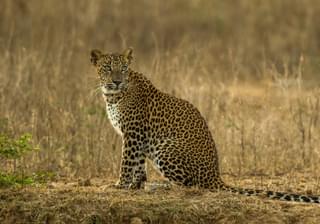
Regal and majestic, if you’re hoping to see lions, you’re in luck as these are the easiest of the Big Cats to spot thanks to their love of a daytime doze in the African savanna. No safari is complete without seeing these maned cats, their thunderous roar echoing across the plains at night and if you are fortunate enough to spot lion cubs playing the grass tumbling over each other, it is sure to be a sight you remember forever.
Whilst you have a good chance of spotting lions on any African safari, here are our hotspots.

a) Masai Mara, Kenya
The Masai Mara in Kenya is one of the best places in the world to see lions, cheetahs and leopards so you might be lucky and score a hat-trick, but you are almost guaranteed to see lions thanks to the high density that live here. It is also where Big Cat Diaries was filmed which followed a pride of lions.
To maximise your sightings, consider travelling in the dry season when the savanna grass will be shorter and spotting these golden cats will be easier. The Great Migration between June and October coincides with the dry season and is when millions of wildebeest and zebra follow the rains to fresh pastures, and of course, where there is food, predators follow.
Trip idea: Kenya big five safari and beach honeymoon which combines Samburu and the Masai Mara followed by the warm waters of Diani beach.
b) Serengeti, Tanzania
The Serengeti National Park is home to over 3,000 lions making up 300 prides, some of the highest number of lions found anywhere in Africa. Tanzania is famed for the ‘Great Migration’ which takes place annually as the wildebeest and zebra migrate around the Serengeti and into the Masai Mara, the migration is always followed by plenty of hungry lions looking for their next meal.
The female lions in the Serengeti are known to hunt more than the male lions so don’t be surprised if you see females working together to bring down a wildebeest, buffalo or gazelle.
Trip idea: Northern Tanzania and Zanzibar - this safari combines three of Tanzania's most famous safari spots Tarangire, Ngorongoro Crater and the Serengeti, with the white sandy beaches of Zanzibar.
c) Queen Elizabeth National Park, Uganda
Queen Elizabeth National Park gets a special mention due to its high number of tree-climbing lions. Whilst it is very rare for lions to climb trees, there are a few places in Africa where the lions do and can be seen lazing in the shady branches of an acacia or sycamore-fig tree. Watching these big cats climb with ease up the trunk of a tree, patrol along branches balancing like ballerinas and then lie down for a snooze with their legs dangling freely from the branch is a unique and beautiful sight.
Climbing the tree provides these lions with shelter from the sun, it is cooler than the hot earth and provides a good vantage point for them to keep an eye out for their next hunt. In the wet season, it also helps the lions to avoid insect bites from the tsetse fly which is prevalent during this time.
Trip idea: Ultimate Uganda which combines gorilla trekking, chimpanzee habituation experience and safari in Queen Elizabeth National Park.
Other places to spot tree-climbing lions: Lake Manyara in Tanzania


The third largest of the big cats, strong swimmers and with the most powerful bite of any cat they are able to bite through crocodile hide and take down animals 3 or 4 times their size. The word 'jaguar' comes from the indigenous word 'yaguar', which means 'he who kills with one leap'. Deforestation means their territory size is shrinking and they are also under threat from poaching despite it being illegal.
To the untrained eye, Jaguars look remarkably similar to leopards, but you can tell the difference. Jaguars have larger, rounder heads and shorter legs, and their rosettes have black dots in the middle, whereas leopard rosettes don’t.
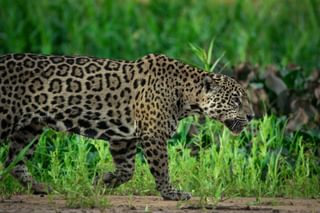
a) Northern Pantanal, Brazil
The Pantanal is home to the largest floodplain in the world, the ideal habitat for jaguars who are renowned for being strong swimmers. Here, in the northern Pantanal are the highest con concentration of jaguars in the world, and as safaris take place on boats, it is possible to cruise slowly down the waters keeping an eye out for the cats watching warily from the water's edge, or if you are lucky even hunting for caiman, their main food.
Trip idea: Just Jaguars focuses on spotting jaguars within two different areas of Brazil's Pantanal to maximise your chances of seeing these cats.
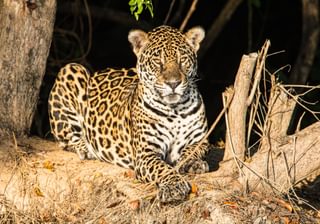

The largest and perhaps more striking of the big cat's thanks to its brightly coloured and distinctive stripes.
Despite the famous poem “Tyger Tyger, burning bright, In the forests of the night” by William Blake, it is notoriously hard to see these magnificent cats in the wild due to the fact that poaching and habitat encroachment has made them endangered. It is thought that there are around 5000 tigers left in the wild and depressingly more in American zoos than living freely in their natural habitat. Official figures from the World Animal Foundation place the number at 5,574.
It does mean the opportunity to see these incredible cats in their natural habitat is even more humbling, and the best place to see them is in India where the Bengal tiger can be found.


a) Bandhavgarh National Park & Ranthambore National Park, India
Bandhavgarh National Park in central India has the highest density of Bengal tigers and allows visitors a true jungle experience by spotting these animals within the dense forest. However, whilst Bandhavgarh has the highest density of tigers, Ranthambore National Park is perhaps the best known due to its accessibility from the golden triangle. Ancient ruins of Ranthambore fort run through the park adding intrigue and mystery to any tiger game drive, and the hilly topography provides a good vantage point to spot these giant cats.
Trip idea: Golden Triangle and Tigers - see India's top highlights including Dehli, the Taj Mahal and the pink city of Jaipur, alongside tigers in Ranthambore.
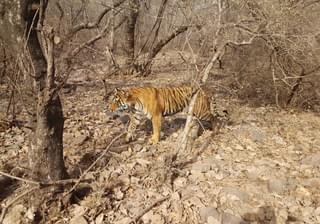
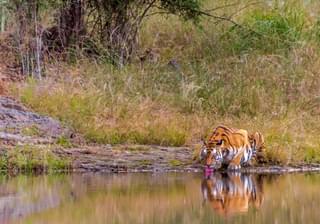
The fastest animal on the planet, and whilst not historically considered a Big Cat, these speedy critically endangered felines are one of the most sort after cats to see in the wild.
The word “Cheetah” is derived from the Hindi word “Chita” meaning “spotted one” and is the only one of the big cats to have spots as opposed to rosettes. Smaller and slighter than the other cats included here, cheetahs have the longest leg of any cat, perfect for pounding at speed over the savanna.
Sadly cheetahs are now classified as Critically Endangered with only 7,000 left in the wild and they are the most endangered big cat in Africa. 95% of cheetahs die before reaching adulthood as they are killed by lions or hyenas or due to human-wildlife conflict and habitat loss.
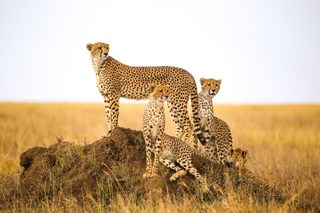
a) Etosha National Park, Namibia
Namibia has the largest, most stable cheetah population in Africa and so is a wonderful place to see these slender, speedy cats.
If you are looking to see cheetahs in the wild, Etosha is an ideal place to start, a large salt pan filled with extraordinary wildlife. Head in the winter months from April onwards when the grass will be drier and shorter, and water less available meaning animals head to the waterholes.
It is also worth visiting the Africat Foundation in Okonjima which runs a cheetah rehabilitation program and which you can visit for a day.
Trip idea: Classic Namibia self-drive which includes many of the country's highlights including Etosha National Park, Damaraland and Sossusvlei.
b) Masai Mara, Kenya
Much is being done to protect and build cheetah numbers in the Masai Mara, both in the main national park and in the conservancies with cheetahs being monitored, and the Mara-Meru cheetah project is definitely worth taking a look at.
Whilst cheetah numbers have vastly decreased in the last two decades, Kenya is still considered a stronghold for these magnificent cats and so your chances of spotting them in the Masai Mara are good.
Cheetahs typically live solitary lives except when raising their cubs, but in Kenya untypical cheetah social behaviour has been described where cheetah cubs have been accompanied by two or more adults.
Trip idea: Kenya family adventure which combines Samburu and the Masai Mara so you experience two completely different landscapes.
c) Serengeti, Tanzania
The Serengeti in Tanzania is where many of the longer studies on cheetahs have taken place and with its open, grassy plains and abundance of prey, it is a wonderful location to look for these wild cats. Whilst sightings are certainly not guaranteed due to the limited numbers, the eastern plains of the Serengeti are particularly rewarding and where many research projects have taken place.
Trip idea: Walk, mountain bike and drive in Northern Tanzania - an active safari allowing you experience wildlife from a unique perspective.
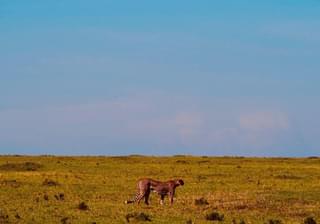
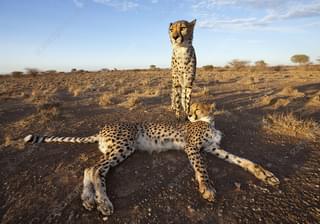
Many people get confused by the similar markings of cheetah, leopard and jaguar, but we’ll shine a light on how to tell the difference between these three sets of markings.
Cheetahs have a solid, round, polka-type spot measuring 2-3cm in size and can have as many as 2,000 spots on their coat.
Leopards by contrast have rosettes rather than spots which are round, flower (rose) shaped black circles with a brown centre to them.
Jaguars also have rosettes similar to leopards, but they have small black dots inside the rosette.

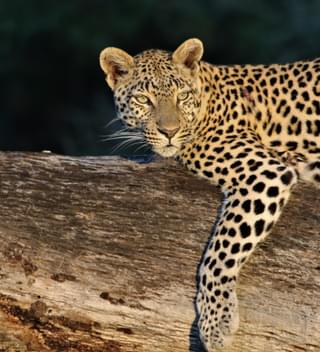
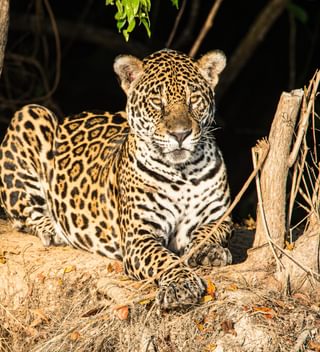
Start planning your tailor made vacation with Far & Wild.

Travel Expert